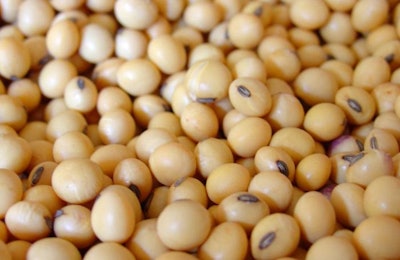
With soy protein isolate containing as much as 90 percent crude protein, one might be excused to think that, given that the economics are right, a more concentrate source can be used as effectively as soy protein concentrate. This arises from the misconception that the two protein sources are derived from the same process, one being more concentrated than the other — the difference being undesirable compounds. However, this is far from the truth.
In fact, the two soy protein sources are manufactured using quite distinct processes. The differences also extend to the main use these products are intended for: soy protein isolate is a prime protein source for human nutrition products, whereas soy protein concentrate is manufactured for use in animal feeds. The abundance of soy protein isolate, mostly of Asian origin, has prompted many manufacturers to consider this ingredient (often sold at a discount due to quality problems, which do not affect animals) for use in specialty feeds such as milk replacers, piglet feeds and broiler super pre-starters.
The two soy protein sources are manufactured using quite distinct processes.
In general, soy protein is just that, and there should not be a problem whether it comes from a 90 or a 60 percent protein concentration product. Yet, we should not forget that young monogastric animals (including milk-fed calves) are sensitive to the main proteins of soybeans — in addition to the anti-nutritional factors that are largely removed from concentrated soybean protein sources. As it happens, the process of manufacturing soy protein concentrate involves a step that reduces this antigenic-allergic reaction in the gut. This is not the case, however, in the process of soy protein isolate. The key word is “reduces,” as total elimination of this problem remains an elusive goal.
When we consider a protein source from soybeans, we must ensure that the allergenic reaction factor is not going to cause any unexpected problems. Soy protein concentrate seems to be a much better choice than its isolate counterpart, which can be reserved for formulas used after the first exposure of animals to soybean proteins. Again, it must be emphasized that the allergenic reaction of young unexposed animals to soybean protein is distinct and, in addition to the problems faced by all ages of pigs and poultry due to anti-nutritional factors, such as lectins, trypsin inhibitor activity, oligosaccharides, saponins, tannins, phytoestrogens, etc.

















